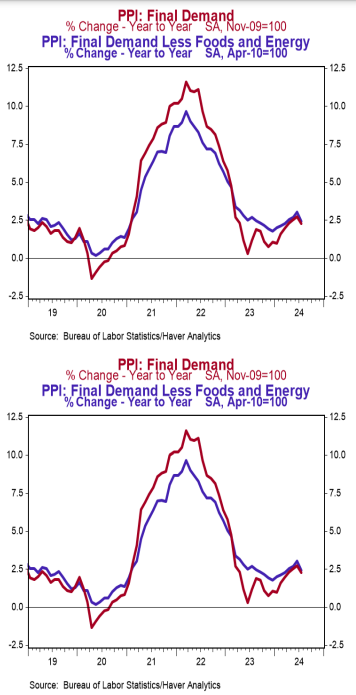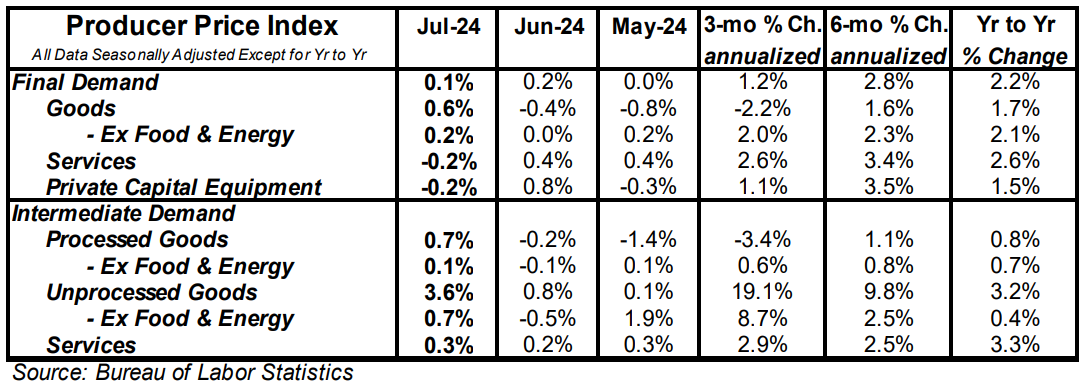- The Producer Price Index (PPI) rose 0.1% in July, coming in below the consensus expected increase of 0.2%. Producer prices are up 2.2% versus a year ago.
- Energy prices rose 1.9% in July, while food prices increased 0.6%. Producer prices excluding food and energy were unchanged in July and are up 2.4% versus a year ago.
- In the past year, prices for goods have risen 1.7%, while prices for services have increased 2.6%. Private capital equipment prices declined 0.2% in July but are up 1.5% in the past year.
- Prices for intermediate processed goods rose 0.7% in July and are up 0.8% versus a year ago. Prices for intermediate unprocessed goods rose 3.6% in July and are up 3.2% versus a year ago.
Implications: The effects of a tight monetary policy are being felt across the US economy, and are showing in the inflation data. Producer prices rose 0.1% in July, are up 2.2% in the past year, and are showing signs of slowing of late, up at a 1.2% annualized rate over the past three months. The July rise was led by a 1.9% increase in energy prices along with a 0.6% rise in food prices. Stripping out these typically volatile components shows “core” prices unchanged in July and up 2.4% in the past year. Diving into the details of today’s report shows goods prices lead the index higher, rising 0.6% in July and up 1.7% in the past year. The July increase in goods was led by the aforementioned food and energy categories, and excluding those categories showed a more modest 0.2% increase in goods costs for the month. Prices for services declined 0.2% in July, led by a 1.3% drop in final demand trade services (think margins received by wholesalers), more specifically a 4.1% decrease in margins for machinery and auto retailing. The direction of inflation moving forward is very likely to be dictated by the services side of the economy, which suffered heavily during the COVID shutdowns but has since returned to the forefront in consumer demand, and the July decline in services prices comes in sharp contrast to movements seen for the category over recent months (services prices rose 0.6% in April and 0.4% in both May and June). We will be watching this category closely to see if July is a one-off decline that will reverse in the months ahead, or if the bite of tight monetary policy will sustain. Further back in the supply chain, prices in July rose 0.7% for intermediate demand processed goods and rose 3.6% for unprocessed goods. We do anticipate easing in inflation will continue should the Fed have the patience to let tighter monetary policy do its work, but inflation risks an eventual re-acceleration should the Fed overreact and ease policy too quickly at signs of economic trouble.





